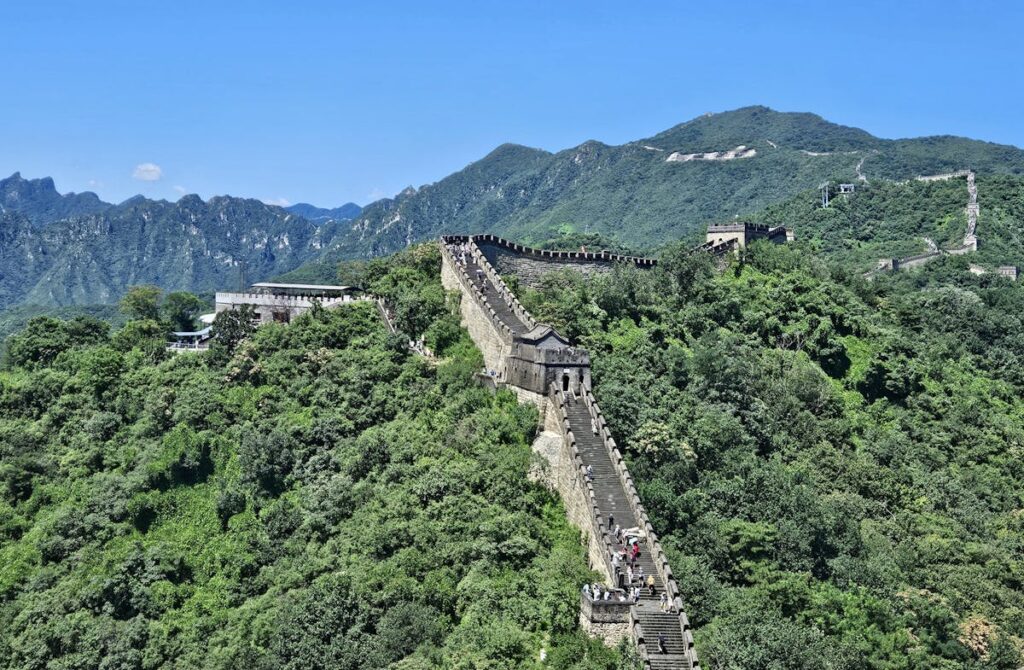The Great Wall of China is not just a normal wall; it’s a masterpiece of the world that stretches across deserts, mountains, and grasslands. It is also one of the Seven Wonders of the World; it was made as a sign of strength, unity, and human perseverance. The Great Wall of China has many fascinating facts, and in this article, we will discuss 11 myths about it.
History of the Great Wall of China
The first sections of the Wall date back to the 7th century BC when Chinese states built defenses to protect themselves from attacks. Later, during the Qin Dynasty from 221–206 BC, Emperor Qin Shi Huang ordered the association of these walls, making the foundation of the Great Wall as we know it today. However, the Ming Dynasty from 1368–1644 built the most iconic parts of the Wall, adding strong bricks, watchtowers, and fortresses that are still in good condition today.
11 Interesting Facts about the Great Wall of China
The Wall is Not a Single Continuous Structure
The Great Wall is not one long straight line extending across China. Instead, it is a collection of intersecting walls and sections built by different empires. Some parts have collapsed over time, while others were abandoned or reconstructed. Together, we see this huge structure called the Great Wall of China.
The Total Length is Amazing
If you thought the Wall was just a few hundred kilometers, you are wrong because the total length, including all its branches and defenses, is estimated to be about 21,196 kilometers. That’s like turning half the globe! It passes through mountains, deserts, rivers, and grasslands, making it one of the most motivated architectural projects in history.
Built by Millions of Workers
The Great Wall wasn’t the work of 100 to 200 engineers; it was built by millions of soldiers, laborers, and prisoners. Conditions were dangerous, and many workers lost their lives during construction. This sacrifice is why some historians call it the “longest cemetery in the world.”
The Wall was not made for Just Defense
The Wall was built to keep enemies out, but that wasn’t its only purpose. It also helped control trade along the Silk Road and regulated migration. You can also say, it was made for both purposes, a military defense line and a tool for managing China’s economy and people.
The Wall Can’t Be Seen from the Moon
You’ve probably heard the myth that the Great Wall can be seen from the moon. Well, that’s not true. That’s true, the wall is too long, but it’s not wide enough to be visible from such a distance. Astronauts confirm that it’s also hard to see from low Earth orbit without special equipment.
Unique Construction Materials
Depending on the region, builders used any kind of resources they had available. In deserts, tamped earth was common. In mountainous areas, stones and bricks were used. Some sections even used sticky rice flour as filling! This flexibility helped the Wall survive for centuries.
Watchtowers and Signal Fires
The Wall wasn’t just a barrier; it was also a communication line. Watchtowers were placed at intervals, allowing soldiers to keep an eye out for enemies. Signal fires and smoke were used to send warnings quickly across massive distances.
It Inspired Many Legends
One of the most famous legends is the story of Meng Jiangnu, whose crying over her husband’s death allegedly caused a section of the Wall to collapse. Such stories turned the Wall into more than a military structure; it became a sign of human emotions, sacrifice, and resilience.
Parts of the Wall Are Disappearing
Unfortunately, not all pieces of the Great Wall remain complete. Natural erosion, harsh weather, and even human activities like farming and construction have broken large portions. Today, only about 30% of the Wall is in good condition.
The Wall Attracts Millions of Tourists
Every year, millions of tourists from around the world visit China to see this wall. Popular sections like Badaling and Mutianyu near Beijing are in good condition and offer incredible climbing opportunities. Walking along these ancient stones feels like coming into history.
Recognized as a UNESCO World Heritage Site
In 1987, UNESCO recognized the Great Wall as a World Heritage Site, strengthening its place as a global treasure. It represents not only China’s history but also the mutual effort of humanity to achieve the extraordinary.
The importance of the Great Wall of China today
Today, the Great Wall is more than an ancient defense system; it’s a cultural icon. For China, it represents unity and national pride. For the world, it’s a reminder of what humans can achieve when determination meets creativity.
Conclusion
The Great Wall of China is not just a normal wall; it’s like a history of magic. Each brick of this wall tells a story of sacrifice, struggle, and determination. From its amazing length to the myths surrounding it, the Wall stands as a monument of human determination. If you see it in person or read about it, the Great Wall will always remain one of the best constructions in history.





